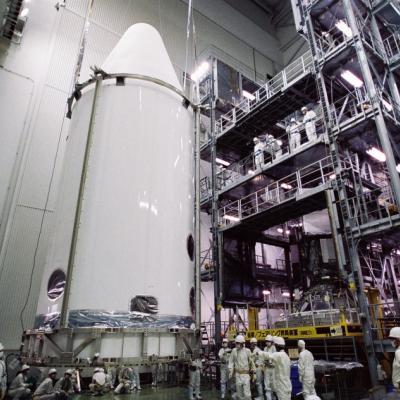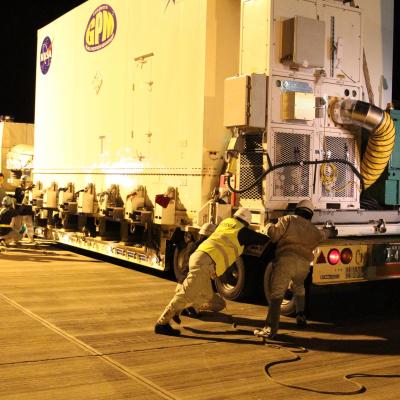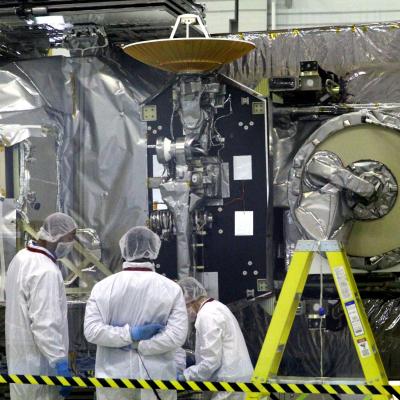GPM Undergoes Final Functional Tests
Preparations for the launch of the NASA-JAXA Global Precipitation Measurement (GPM) Core Observatory continue on schedule at Tanegashima Space Center, Japan. Launch is scheduled for Thursday, Feb. 27 U.S. time / Friday, Feb. 28 Japan time. The Core Observatory is now encapsulated in the fairing and installed on the second stage of the H-IIA rocket in the Vehicle Assembly Building. On Feb. 19 and 20 (JST), the Core Observatory and the launch vehicle underwent the final functional test for two days. This test included power on/off operation of the launch vehicle and the spacecraft as well as




